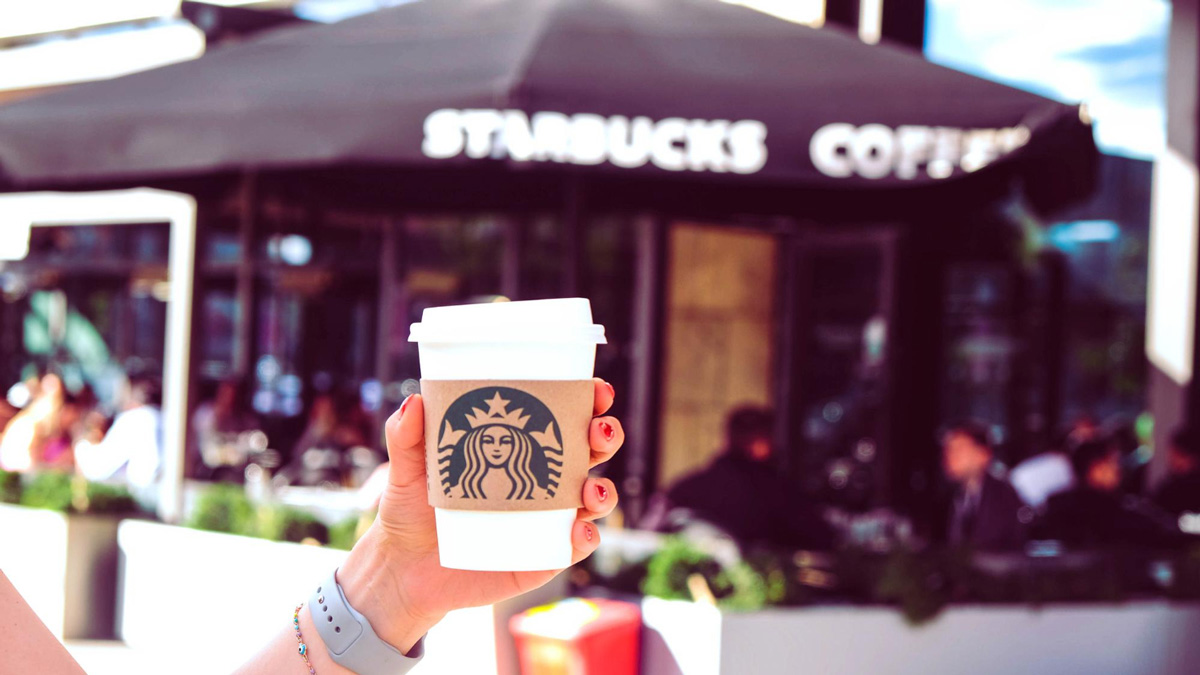
No matter what you sell, you already know that there’s a ton of competition out there. That’s why companies invest heavily in creating a distinctive product that can give them an edge on the market.
But, many times, the product isn’t the deciding factor for customers. It’s how they feel about the product’s brand and their brand experience that makes the ultimate difference. But, what is brand experience?

What is Brand Experience?
Brand experience is simply how you feel and view a brand when you interact with it. It’s the feeling you have when shopping at the brand’s physical store, watching its ad on TV, watching the brand’s mascot, or simply looking at its logo.
While some brands make you think of cutting-edge innovation and creativity, others are not reliable and have a poor reputation. This experience is different for every person because everyone has a unique relationship with a brand.
For example, you may go to Wendy’s with some of your friends, eat a delicious burger, and interact with friendly staff. But, someone else may go to the exact same place, order food, and in return, get burnt fries and a snappy comment from the waiter.
That can explain all the contradictory Yelp reviews.
Why is brand experience important?
Now that you know the brand experience definition, you may still wonder how it really impacts a business and its customers. In other words, why should a company invest in creating a pleasant branded customer experience? There are several reasons:
It Can Dramatically Impact Customer Loyalty
People will be loyal to a brand if they have a good brand experience because they develop an emotional connection with the brand and obviously trust it enough to make repeat purchases. This is huge because keeping an existing customer is far cheaper than trying to capture a new one. But it’s not just that. The trust and bond inevitably make them a brand advocate where they just spread the word about your products to their friends and family. So, they can make it easier and cheaper to acquire new customers as well.
It’s Life and Death for a Business
A business cannot actually own a brand, no matter how much it wants to believe it does. A brand is something that exists in people’s minds, and how they feel about it can make or break it. It’s even more critical to make sure customers have a great brand experience now that everyone is on social media and has a voice.
Bad publicity, poor product quality, rude customer service, and controversial ads are just some poor brand experience examples that can really harm your brand and sales.
It Gives You an Edge
This is what a brand does: It makes you different from the rest. Whether it’s a popular brand mascot, a fun jingle, excellent customer support, celebrity affiliations, or famous seasonal discounts and bonuses, you can create a branded customer experience that makes you “different” from the rest.
That’s what Mozilla did for the mobile Firefox Lite browser. In a market that’s packed with lifeless, inanimate logos, Mozilla decided to wow its mobile users with a lively brand mascot, the Fox, that can direct users, show the cool features of its browser, and distinguish itself from other options on the market. It’s one of the perfect brand experience examples that sets a product apart from the rest of the pack.

How to create a brand experience
So, how can you make sure the brand experience works for you and not against you? Well, first, you need a proper brand experience strategy to understand your customers’ needs and create an authentic experience that can fulfill them.
Let’s start by studying your customers.
1. Study Your Customers
Discover why your ideal customers buy, how they usually make purchases, and what they think about other brands. Make sure you also watch how your rivals play the game and how people react to them.
You need to know what they want, their biggest challenges, and how your service or product can help them and make their lives better. You can learn more about them through profiles, surveys, and offline/online communication.

2. Define Your Mission
Once you have a better read on the market and realize what’s “lacking”, you can position your brand as the solution and provide an experience to the customer that fills the gap for them. For example, Nike understood that many people wanted to get in shape or become a pros, but they didn’t have enough motivation or just were scared of the journey.
That’s why Nike built this brand all around motivation, ambition, and determination. Obviously, the message resonated with the people and set the company apart from other sportswear brands.
3. Monitor the Customer Journey
What are the different ways that people interact with your brand? Make a plan for the journey and mark each touchpoint where you can improve their experience. Why is that important? One word: consistency.
The brand experience should be consistent at all touchpoints. You don’t want to create a great product and spend loads on advertising, only to see it ruined by lousy customer support. Any touchpoint from your product, brand mascot, physical locations, website, and all others should be in line with your brand’s mission.
You want the customer to feel satisfied and engaged at every one of these touchpoints. For example, if you find that you’re losing customers due to poor support, you can set up a chatbot and resolve issues faster.
4. Get Honest Customer Feedback
Instead of sweeping bad comments and feedback under the rug, encourage customers to share their opinions, both positive and negative. Honest customer feedback is vital because it shows where the brand experience is lacking.
Plus, when you hear them and resolve their complaints, they feel “heard” and view your brand as a caring organization, not just another business. That’s how you build trust and turn disgruntled customers into loyal ones.

5. Monitor & Optimize the Brand Experience
To figure out how well you’re doing, what your strengths and weaknesses are, and where you can improve and come up with new ideas, you need to measure and improve your brand experience. Always keep an eye on the indicators that matter for your brand’s engagement, image, and revenue.
You want to see how the brand experience strategy works based on these factors so you know where to make improvements. Then, focus on the most pressing issues and quickly resolve those challenges or complaints.
Optimize the Brand Experience
So, you evaluate your brand experience and decide it’s not perfect. What now? There are some ways to optimize the brand experience:
Be More Visible
Brand recognition and visibility are important parts of the brand experience. Companies that work hard to get their name out there tend to have the strongest brands in the world.
If you’re targeting all people, you need to be everywhere. But, if you have a specific audience, you need to be where they are. Do your homework on the industry and your target audience to find out who you’re selling to and what they value.
Showcase Your Values
If you want your business to connect with customers, you need to know what’s important to them. Families are crucial to some people, while careers are important to others. Once you know who they are, let them know where you stand via your brand experience.
Generally, values like caring about the environment, social missions, and supporting those in need help you connect with the audience. But, remember that you need to uphold these values at every touchpoint.
Use Brand Storytelling
One of the most interesting things about brands is that they can tell stories. These stories pull people in and show them the authentic brand experience.
Nike is one of the finest brand experience examples. Their products are surely great, but what really sets them apart is the “Just Do it” slogan, inspiring brand stories, and the famous athletes who share their stories of passion, motivation, and success.
Brand storytelling makes your brand experience stand out and unique, and it can also really influence customers.
But, besides the brand experience, you also need to focus on customer experience and user experience. Yes, they are all different.

How Brand Experience Differs From User Experience and Customer Experience
It’s easy to mix up these three concepts and use them interchangeably. Of course, many do. But, there are fine distinctions.
Brand Experience: Making a Lasting Impression
Brand experience is everything that a person thinks and feels about a brand or product. It’s more than just the merchandise; it also involves the brand’s mission, values, goals, identity, and promises. For instance, when you think of Apple, you may think of sleek design, inventive concepts, and a high-end feel. That’s what comes out of a carefully crafted brand experience.
User Experience: Navigating Ease and Satisfaction
User experience (UX) is all about how users interact with a product or service. It’s about making sure the experience is simple, enjoyable, and effortless. Think of your favorite app. Maybe it makes it easy to order food, get a car, or just listen to music. It’s all about convenience. Businesses spend money on UX to keep users interested and happy.
Customer Experience: Building Relationships Beyond the Purchase
Customer experience (CX) is the overall journey a customer has with a brand. It starts from the first interaction, goes through the purchase process, and extends to post-purchase support. Amazon, for instance, excels in customer experience with its seamless ordering, quick delivery, and responsive customer service. Positive CX encourages loyalty and repeat business.
So, the brand experience is the promise you make to the customer, and you deliver on that promise through customer experience.
Brand Experience Results in Loyal Customers
A great brand experience is the secret sauce for cultivating loyal customers. Just look at the Apple vs. Samsung debates on different forums and social media platforms. In terms of product, both smartphones are more than enough for the average person, but their users will argue passionately against the competition and sometimes even spend more to show their loyalty.
Similarly, Starbucks offers more than just coffee; it’s about the cozy ambiance, personalized service, and the feeling of being part of a community. There may be other smaller brands that make better coffee, but people still remain loyal to Starbucks.
What Is an Immersive Brand Experience?
What is the ultimate goal here? Why do businesses work so much on brand experience? It’s because they want to create an authentic moment where the customer forms a positive association with the brand and feels like they’re part of a story. This is where immersive brand experiences come in.
Businesses can take their customers to a whole new world using engaging technologies like virtual reality (VR) and augmented reality (AR). Once the customer puts on the VR headset, they use all of their senses and actively participate in this new story, creating a unique bond with the brand.
But, it’s not just about the bond. This immersive experience sets you apart from all the other companies because you’ve created an unprecedented experience for the customer. That can easily boost brand awareness and loyalty.
So,
It’s safe to say that brand experience is just as important as the product. In fact, many times, customers choose the brand over the product because they don’t want to spend money on “things”; They want to buy an “experience” and be part of a grander mission.
You can give them this experience by crafting an immersive experience, coming up with a unique, relatable brand mascot, or even using animation to share your brand story. Whichever route you choose, we at Dream Farm Agency can take you to the destination. Just get in touch and let’s take the first step together.

Rojan



